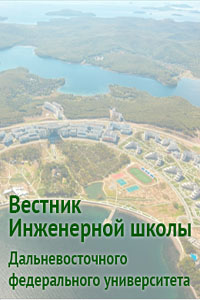Improving road safety under conditions of global warming
DOI:
https://doi.org/10.24866/2227-6858/2024-2/109-118Keywords:
environmental safety, soil mass, synthetic thermal insulator, permafrost, thermal conductivityAbstract
The parameters of global warming and the characteristics of changes in the thickness of the seasonally thawed layer in the eastern regions of the country, changes in ground temperature in the permafrost zone are presented. The consequences of warming that pose a threat to environmental safety are determined. Examples of the use of thermal insulation in regions with harsh climates are given. The urgency of the problem is related to global warming and the threat of degradation of permafrost in certain regions. An analysis of literary sources showed an insufficient degree of research into the optimal methods of using thermal insulation related to the choice of layer thickness, depth of its placement, as well as the timing of installation. The object of the study is soil masses with layers of thermal insulation materials. High-temperature permafrost soils are present in the massifs. The subject of the study is the temperature fields in the soil mass and their changes when thermal insulation is placed in the soil. The purpose of the article is to quantify assess the influence of thermal insulation parameters on the temperature regime of the soil, to identify the most effective ways to use thermal insulation. The temperature fields in the soil mass are determined by solving the nonlinear problem of heat and mass transfer according to the method developed by the author. The influence of thermal insulation on the nature of changes in soil temperature at different depths in different time periods is estimated. The temperature fields for different thicknesses of the heat insulator and different options and timing of its placement in the soil mass are presented. The analysis of the results confirms the expediency of using thermal insulation in the conditions under consideration. The magnitude of movement of the lower boundary of the seasonally thawed layer when using thermal insulation and the recommended timing of thermal insulation placement are determined. The scope of application of the results is engineering protection of transport facilities.
Downloads
Published
Issue
Section
License
Copyright (c) 2024 Far Eastern Federal University: School of Engineering Bulletin

This work is licensed under a Creative Commons Attribution 4.0 International License.

